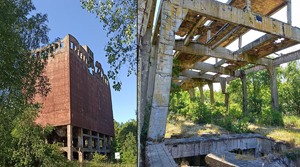No CrossRef data available.
Published online by Cambridge University Press: 30 September 2024

The Hydrierwerke Pölitz AG was a synthetic-fuel plant of strategic importance to the Nazi war machine. The surrounding area contained labour camps, factories and other military infrastructure. The area was a target for sustained Allied bombardment causing extensive damage to the plant and nearby towns and villages. After the war, the plant's troubled past faded before interest was revived in the 1990s. Here, with the aid of historical aerial photographs and modern remote-sensing methods, the authors document the physical remains of the site, reconstruct its ‘dark history’ and reflect on the significance of the Hydrierwerke for the discourse on neglected and appropriated Second World War heritage.